Repairing the Snarkatron
One of my local venues of choice, DNA
Lounge, has a big LED sign on the wall. It provides varying bits of
information; in a past life, it was remote-controllable
by guests, but now it mostly just provides lists of upcoming events.
It's been looking sadder and sadder lately, and getting less and less readable. The club's owner, Jamie, put out a call for help at some point. Being that I fancy myself at least somewhat handy with a soldering iron, and I've always wanted to see what's inside of one, this seemed like a good opportunity: I figured that I couldn't really make things much worse, and it seemed like a good idea to have a time limit on having the thing in my house, with a known place it will go back to after I was done with it.
So, the next Monday, Jeff brought the thing back home, and I set to work.
It's been looking sadder and sadder lately, and getting less and less readable. The club's owner, Jamie, put out a call for help at some point. Being that I fancy myself at least somewhat handy with a soldering iron, and I've always wanted to see what's inside of one, this seemed like a good opportunity: I figured that I couldn't really make things much worse, and it seemed like a good idea to have a time limit on having the thing in my house, with a known place it will go back to after I was done with it.
So, the next Monday, Jeff brought the thing back home, and I set to work.
May 2016
Joshua Wise; CC BY-SA 3.0
(click for big)
Block test shows the damaged rows.
22:35, 2016-05-03
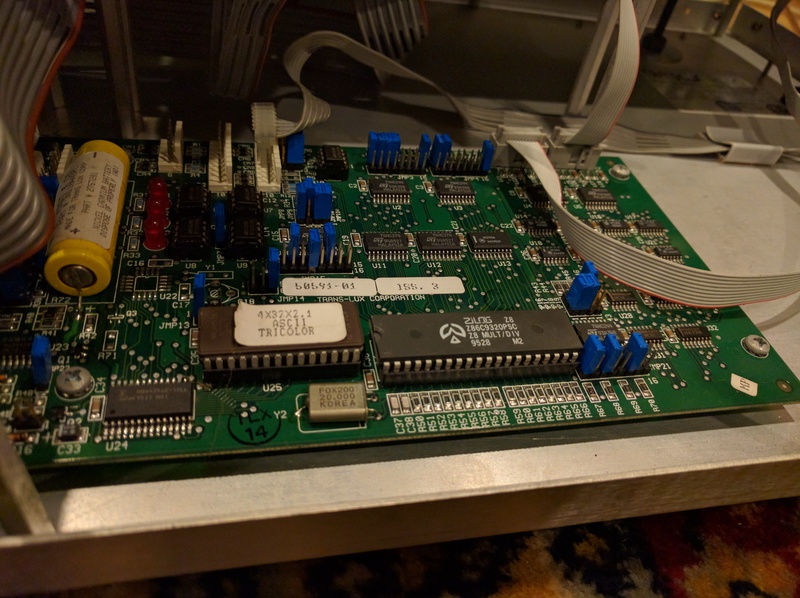
CPU board, which is a 50591-01.
Sadly, it is configured for no-parity, rather than ignore-parity,
which means that it's not 8-bit clean -- this means that you can't
use the upper font space, which it has memory for.
Sadly, it is configured for no-parity, rather than ignore-parity,
which means that it's not 8-bit clean -- this means that you can't
use the upper font space, which it has memory for.
00:21, 2016-05-04

To reset font memory: unplug the thing, remove JMP22, take a
grounded wire, and short it to pin 28 of U24 (the MB84256C SRAM).
Then, plug JMP22 back in, and power back up, enjoying your beautiful new sign...!
grounded wire, and short it to pin 28 of U24 (the MB84256C SRAM).
Then, plug JMP22 back in, and power back up, enjoying your beautiful new sign...!
20:31, 2016-05-04
<BLINK>
22:42, 2016-05-04
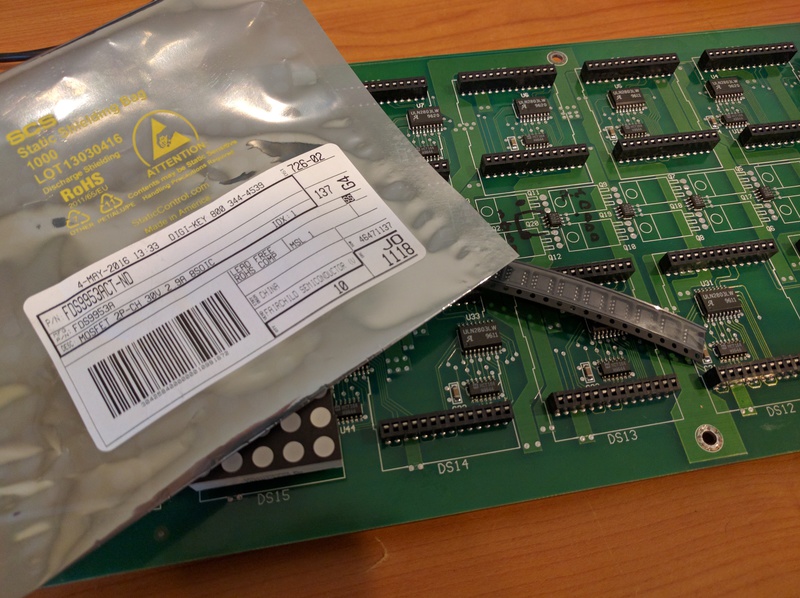
Parts are in from Digikey -- a FDS9953A, P-channel FET. These FETs are on the high side of the LEDs, so it makes sense that they would be P-channel.
12:15, 2016-05-07

And it doesn't work. It turns out that the original parts were NDS9955
N-channel FETs, and they just had a high enough Vgs to drive them, since
they were using 12V from their logic rails!
N-channel FETs, and they just had a high enough Vgs to drive them, since
they were using 12V from their logic rails!
12:28, 2016-05-07
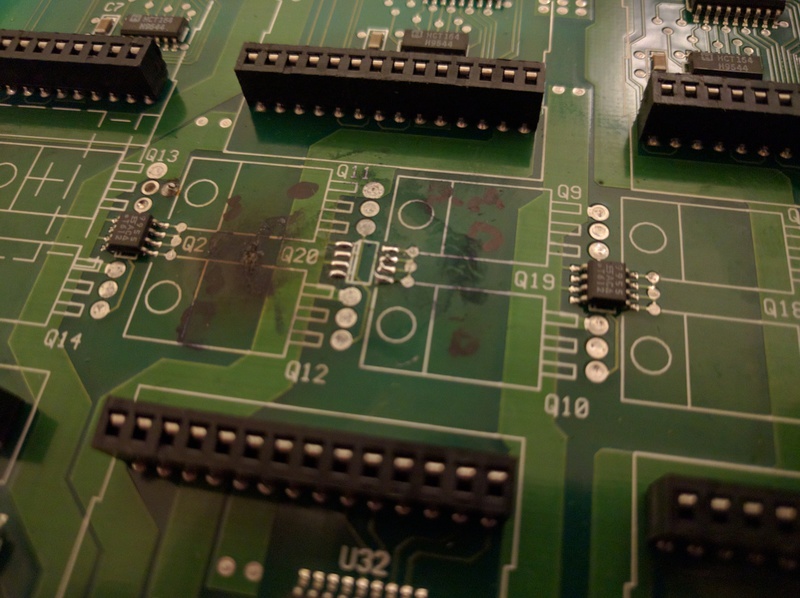
Luckily, j4cbo has some N-channel FETs lying around at home. So out comes the incorrect device again.
00:39, 2016-05-08
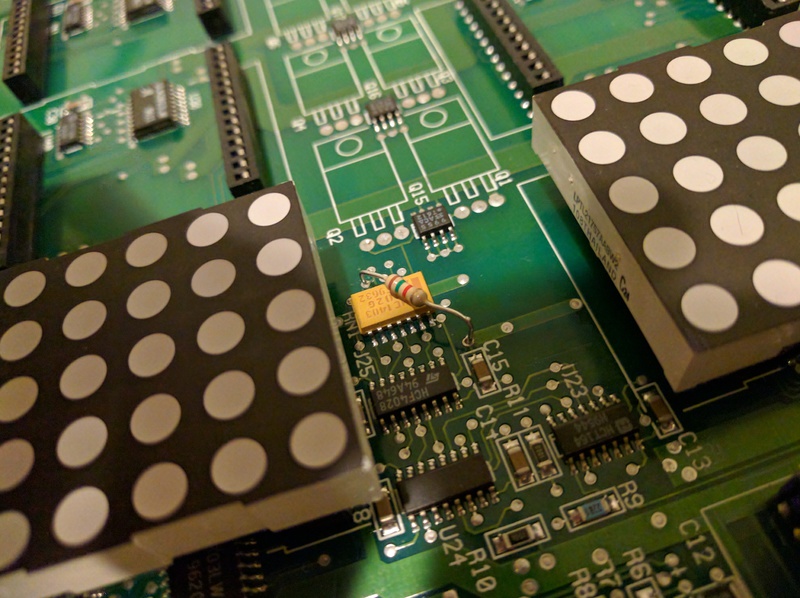
The new device is a BSL802SN, which has a lower Vgs tolerance.
So over on the gate drive side, we set up a resistor divider (using
the existing gate drive resistor as half of it) to trim things down some.
The original network is 1kohm, so I add 1.5kohm to ground.
So over on the gate drive side, we set up a resistor divider (using
the existing gate drive resistor as half of it) to trim things down some.
The original network is 1kohm, so I add 1.5kohm to ground.
00:49, 2016-05-08
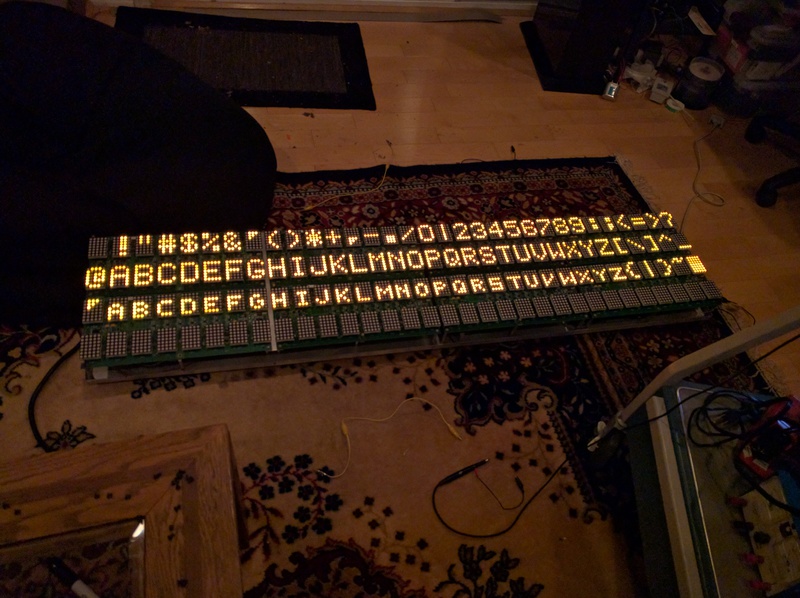
Everything works! The most successful repair in the history of anything I've ever done.
01:26, 2016-05-08
Joshua Wise, 2016
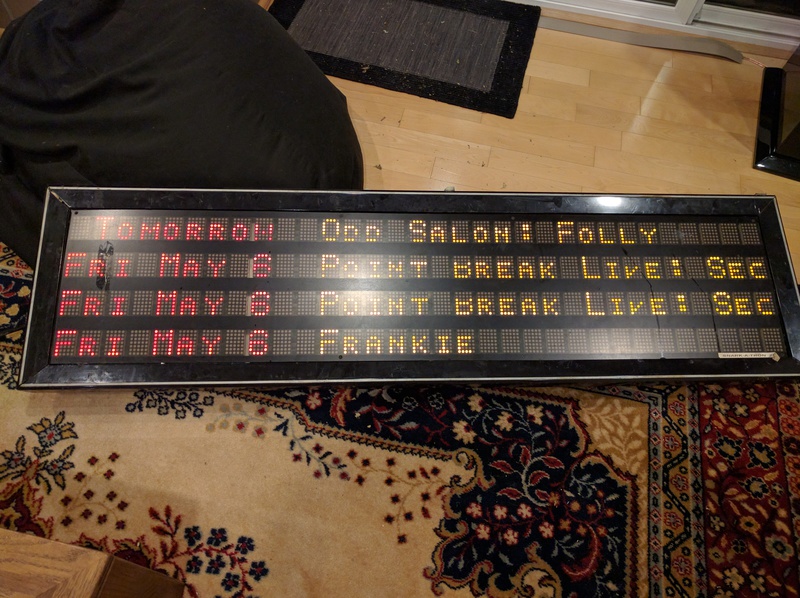
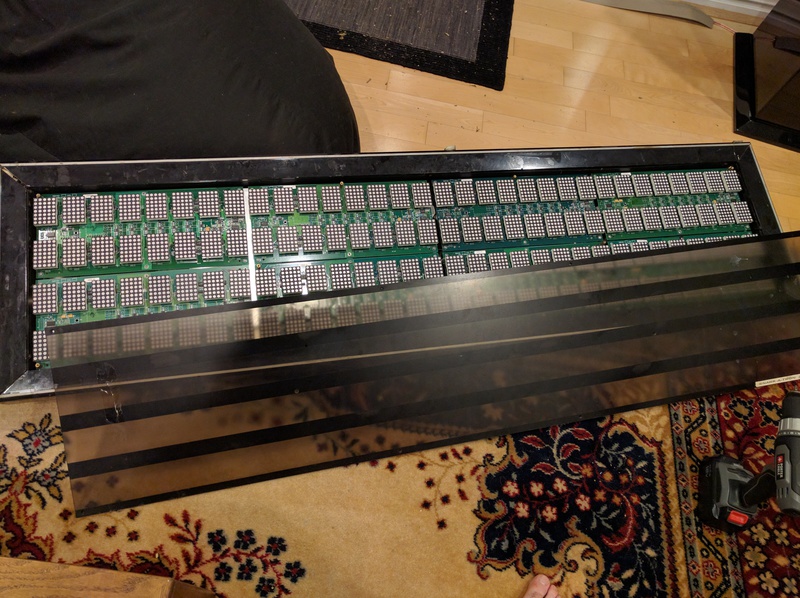
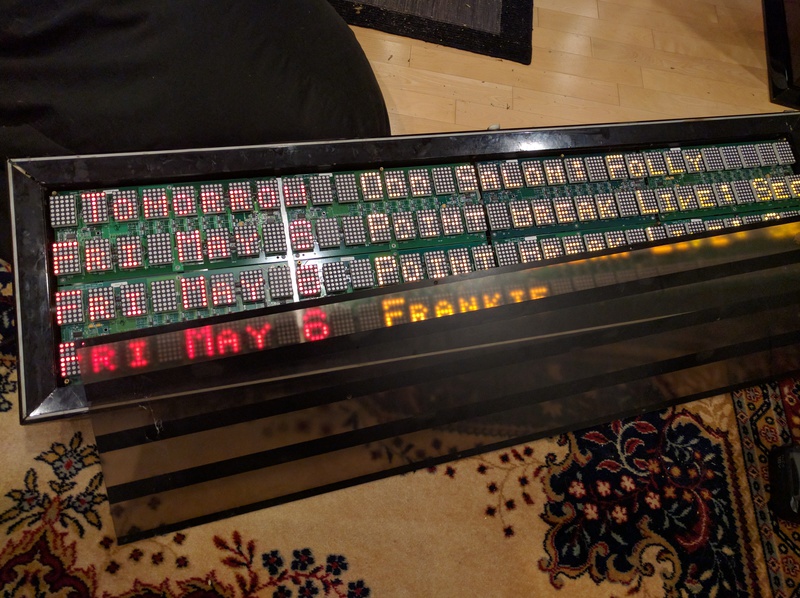
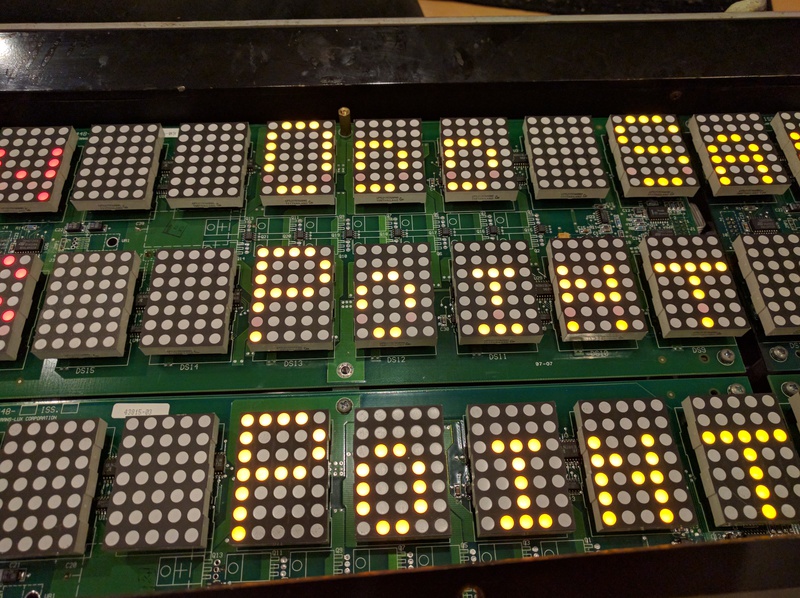

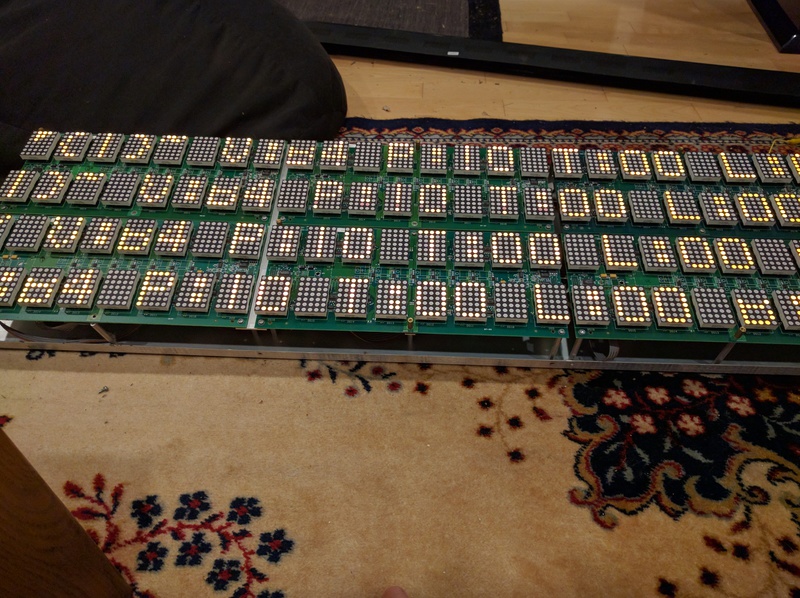
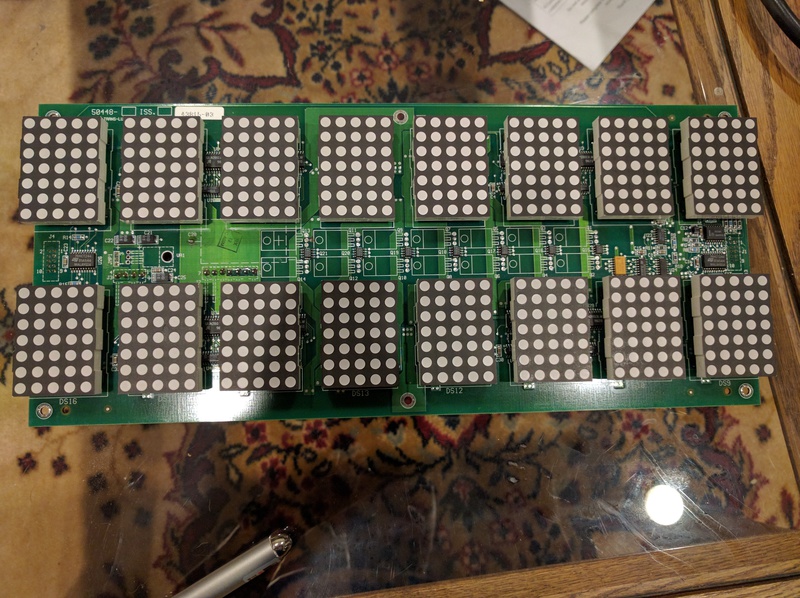
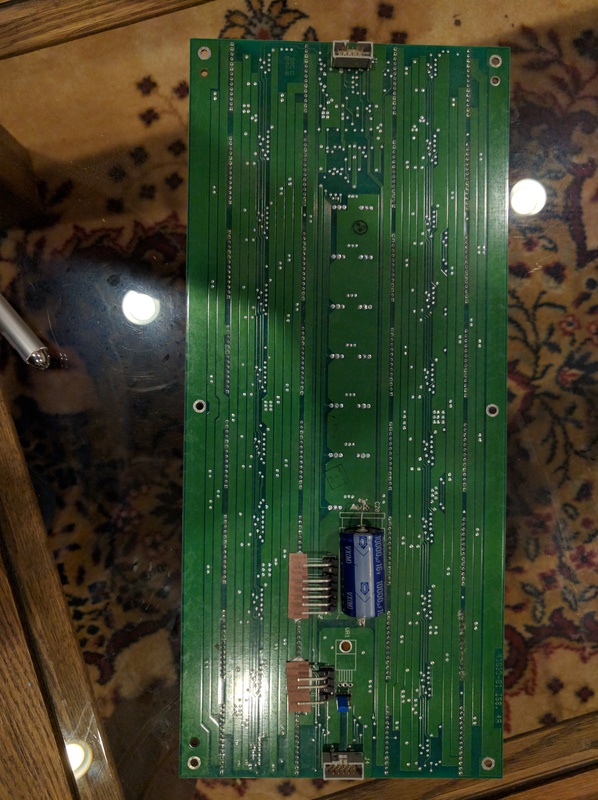
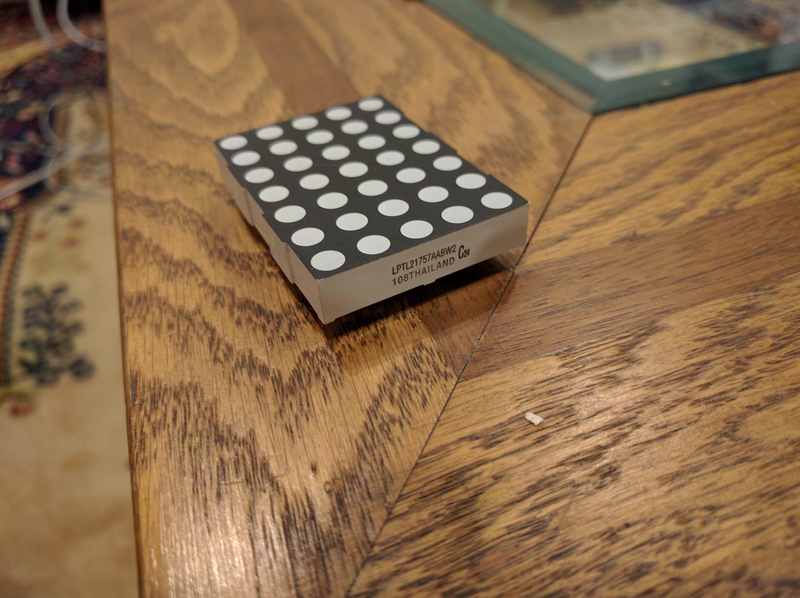
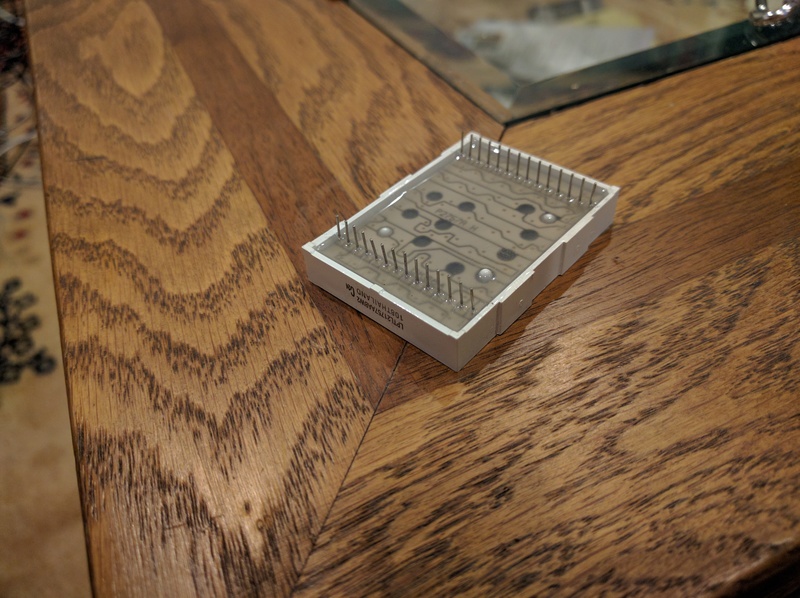
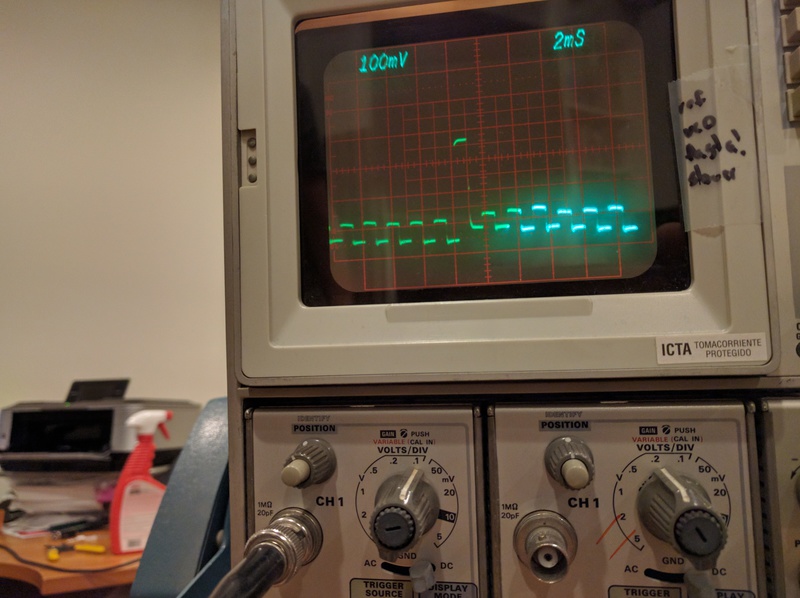
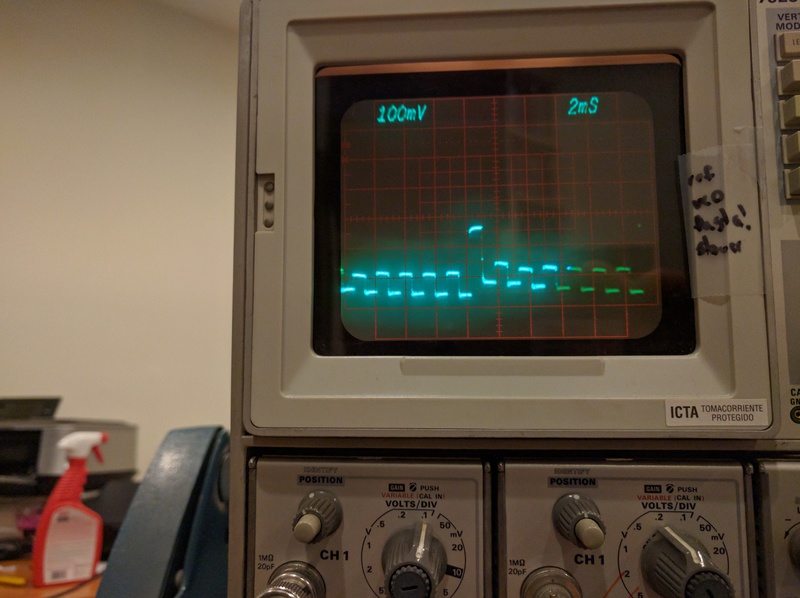

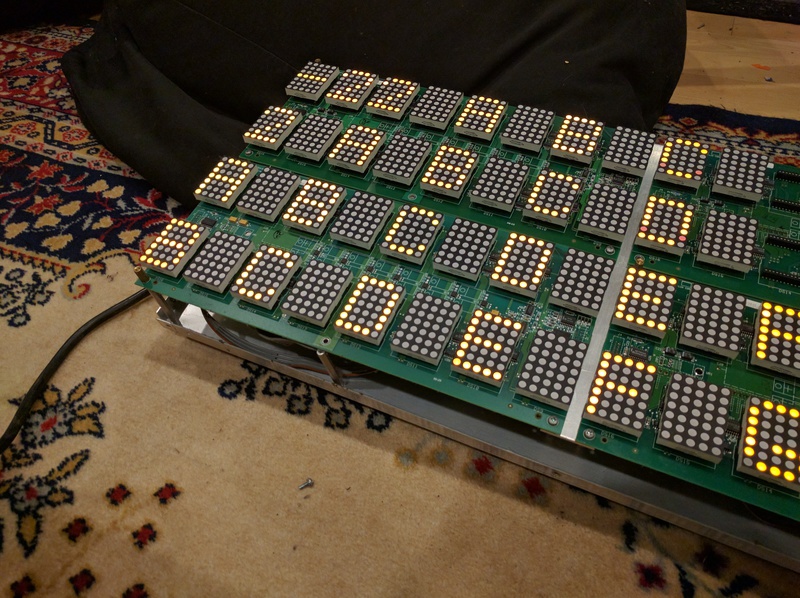
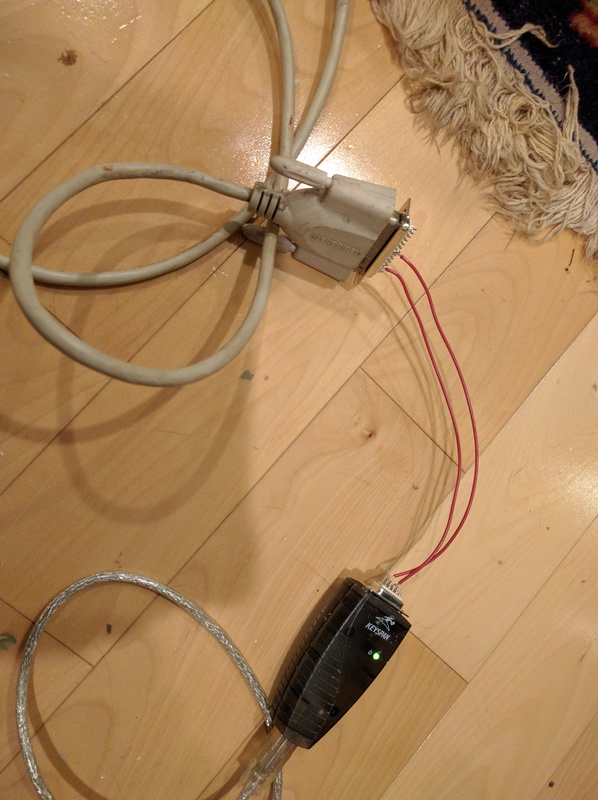
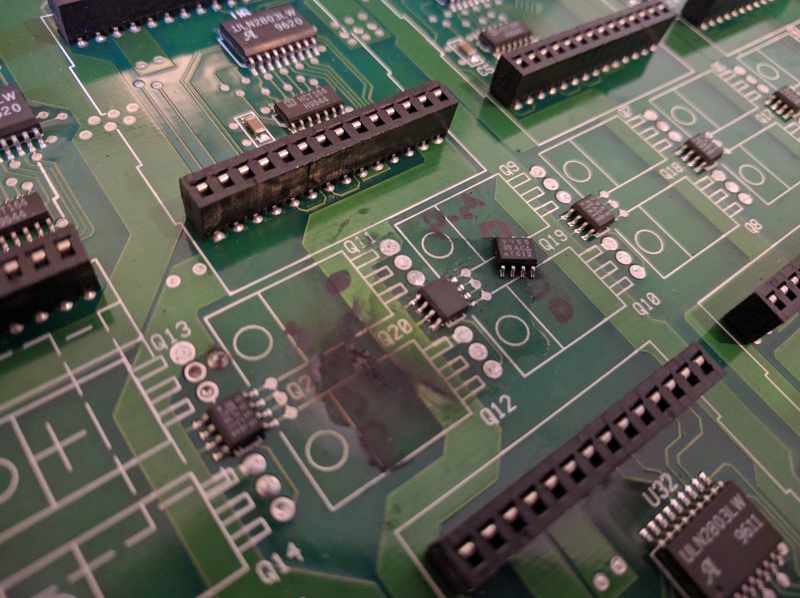
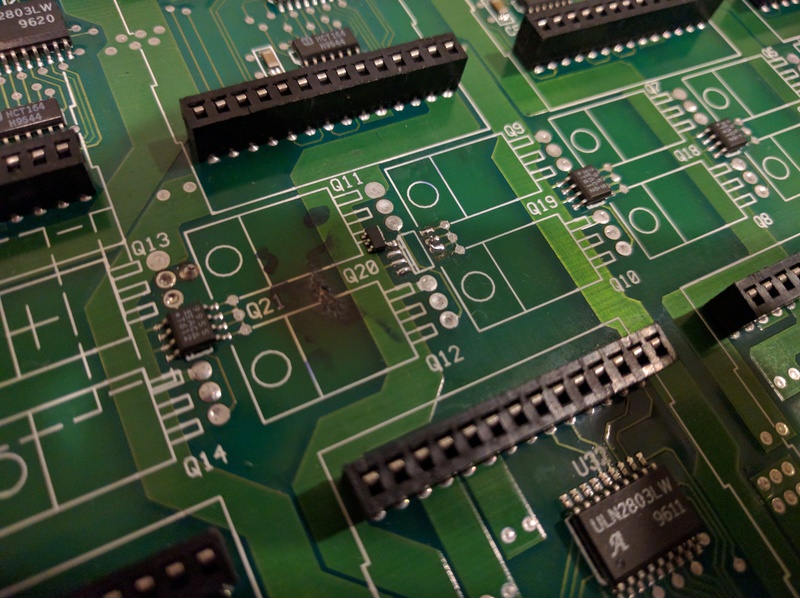

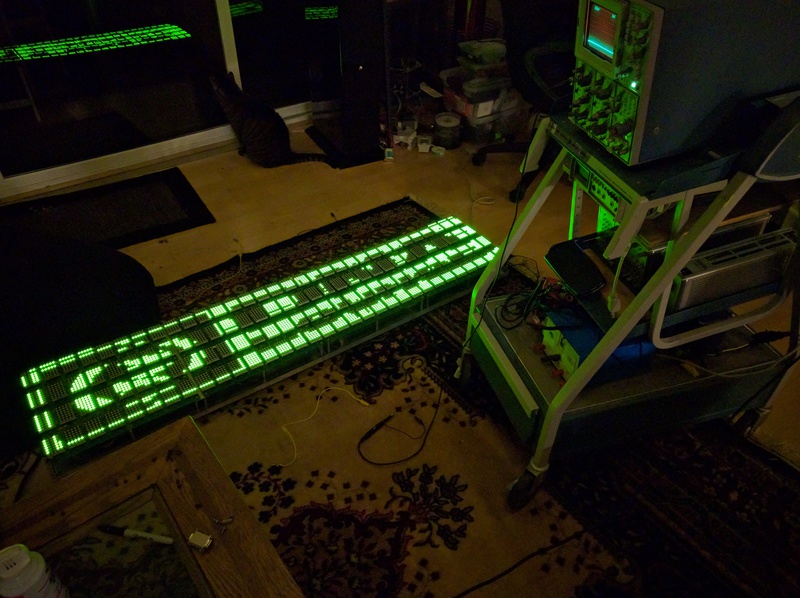
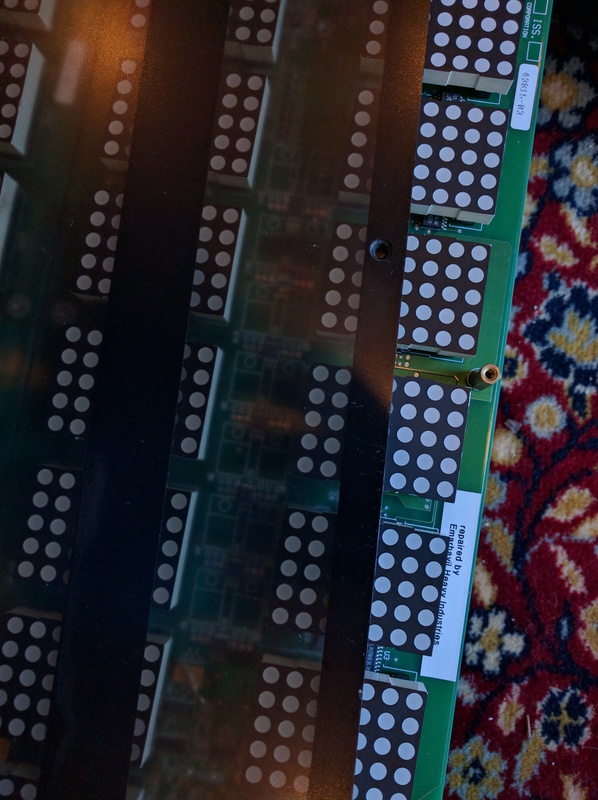

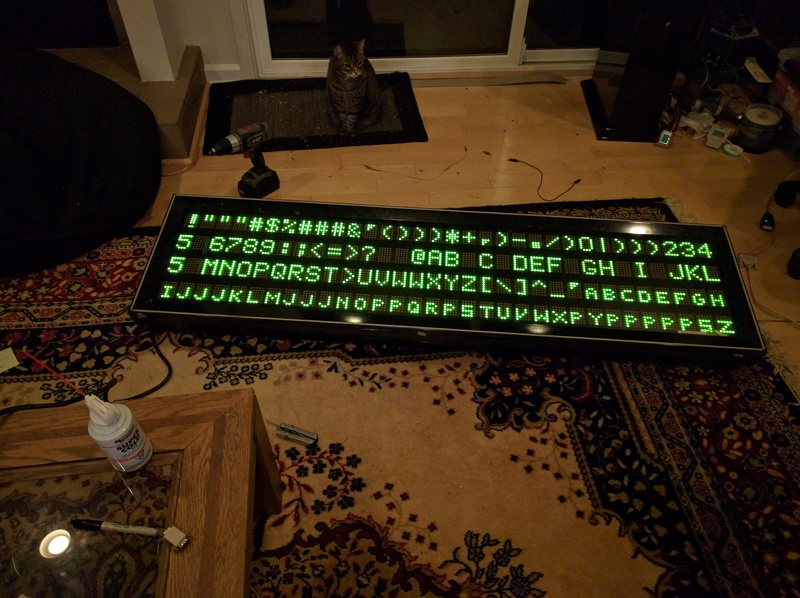
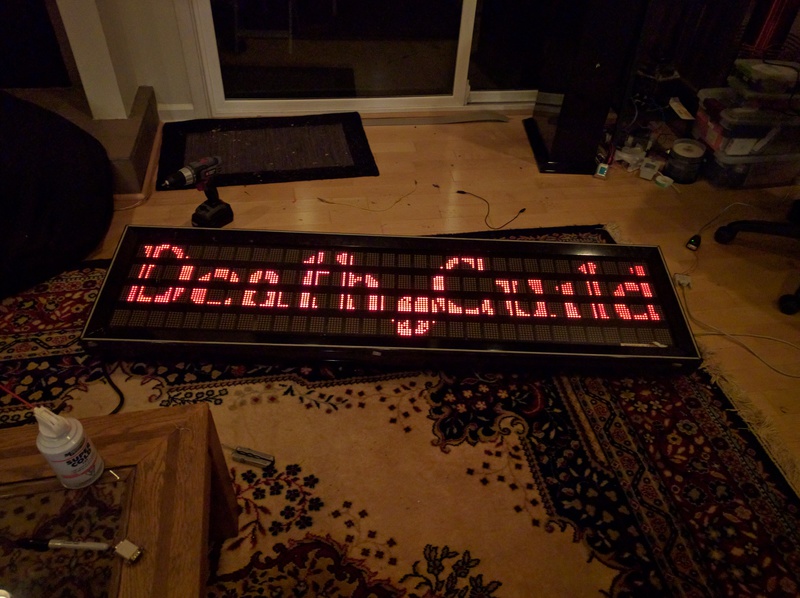
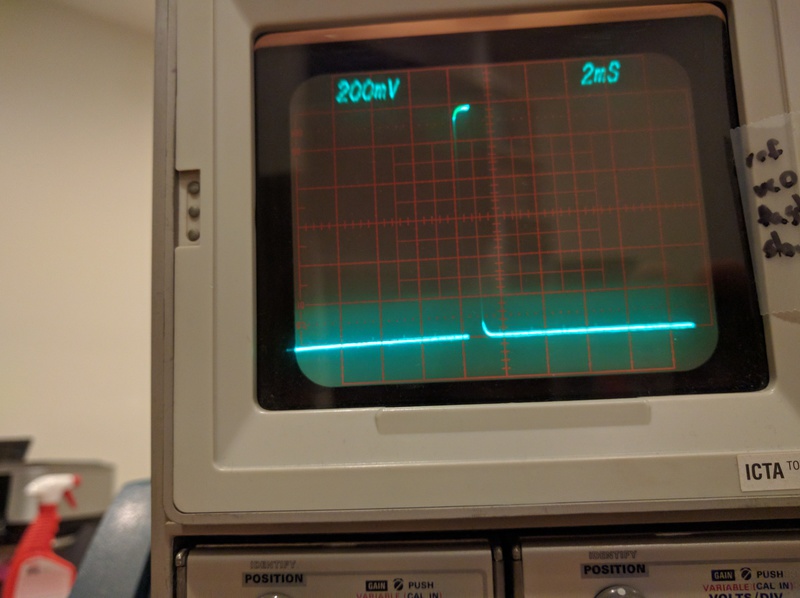
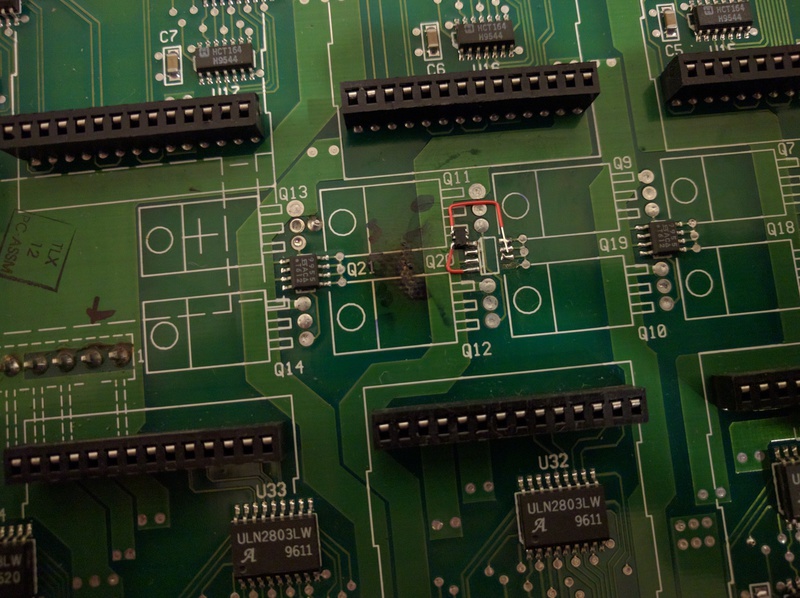
Some rows seem to be bad, and in other places, the fonts are corrupted.
Note that 'B's and 'F's are missing pixels. Other characters elsewhere are also mangled.